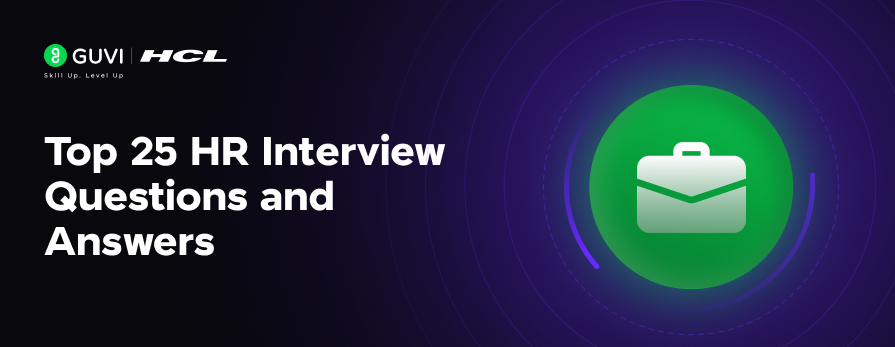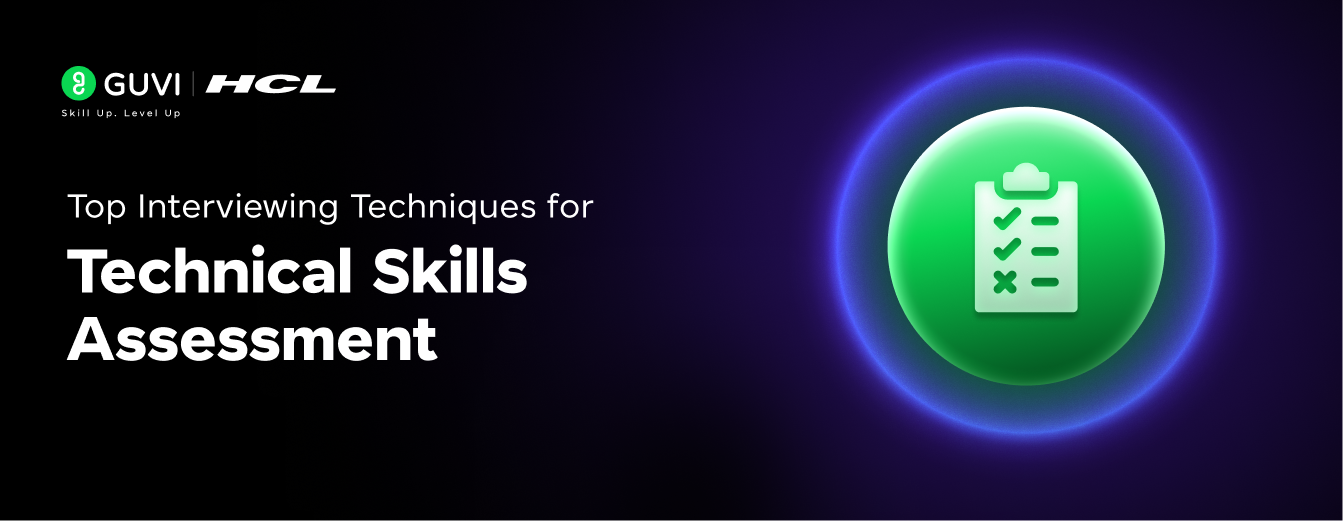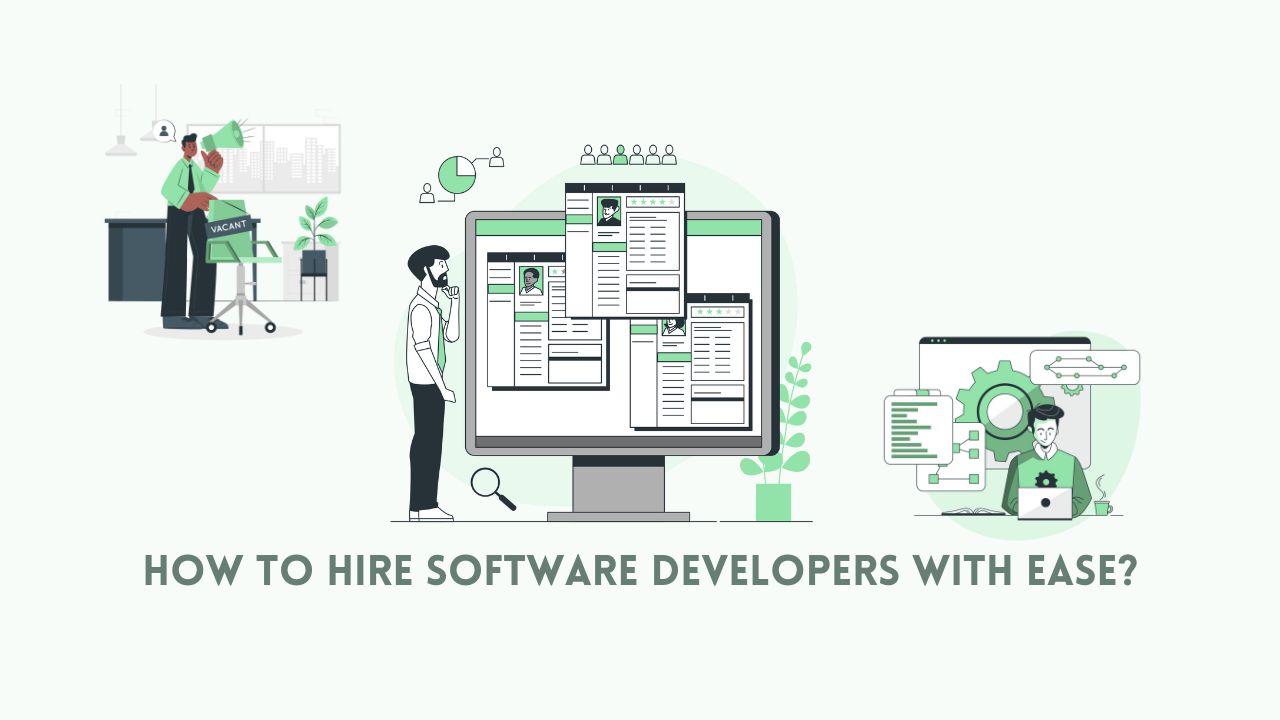
Measuring ROI on Tech Talent Acquisition: Strategies and Best Practices [2025]
Dec 21, 2024 7 Min Read 6629 Views
(Last Updated)
In today’s rapidly evolving tech landscape, an astounding 72% of organizations struggle to find skilled candidates, underscoring a critical talent acquisition challenge. An inefficient talent acquisition process further adds to the challenge during tech talent acquisition.
This stark reality highlights the importance of measuring Return on Investment (ROI) in tech talent acquisition, a pivotal strategy for business success. As companies pine for top tech talent, understanding and optimizing the ROI of recruitment efforts is essential for staying competitive.
So, if you’re also trying to measure the ROI of your tech talent acquisition and increase it subsequently, you have come to the right place. This blog delves into the intricacies of ROI in tech talent acquisition, offering insights into effective strategies, evaluation techniques, and the impact of these practices on organizational growth.
![Measuring ROI on Tech Talent Acquisition: Strategies and Best Practices [2025] 1 Image 1 3](https://www.guvi.in/blog/wp-content/uploads/2024/02/Image-1-3.webp)
Table of contents
- What is the ROI in Tech Talent Acquisition?
- Key Measures of ROI on Tech Talent Acquisition
- Cost-per-Hire
- Time-to-Hire
- Employee Turnover Rates
- Performance Metrics
- Benchmarking ROI to Measure the Success of Tech Talent Acquisition
- How to Measure ROI in Tech Talent?
- Define Clear Objectives and Metrics
- Calculate the Total Cost of Talent Acquisition
- Assess the Quality of Hires
- Evaluate the Impact on Business
- Use Data Analytics for Comprehensive Analysis
- Benchmark Against Industry Standards
- Calculate the ROI
- Report and Refine
- Consider Long-Term ROI
- Incorporate Feedback Loops
- Best Ways to Increase the ROI on Tech Talent Acquisition
- Streamlining the Recruitment Process
- Investing in Employer Branding
- Focusing on Employee Retention
- Data-Driven Decision Making
- Partnerships and Collaborations
- Feedback and Continuous Improvement
- Optimizing the Candidate Experience
- Lucrative Work Arrangements and Benefits
- Employee Referral Programs
- Regular Market Research
- Conclusion
- FAQs
- What are the most important metrics for measuring ROI in tech talent acquisition?
- How to calculate the cost-per-hire in tech talent acquisition?
- What role does employee retention play in the ROI of tech talent acquisition?
- How to quantify the quality of a hire for ROI analysis in tech recruitment?
- How do advancements in HR technology impact the ROI of tech talent acquisition?
What is the ROI in Tech Talent Acquisition?
Before we dive into the ways of measuring return on investment in tech talent acquisition and various strategies to increase it, let’s get the basics clear. Return on Investment (ROI) in tech talent acquisition is a crucial metric that measures the effectiveness and value of investments made in recruiting technology professionals.
In addition to the cost of hiring, it also includes the quality of hires, their contribution to innovation, and the overall impact on business objectives. In the tech sector, where cutting-edge skills and rapid adaptability are paramount, ROI transcends traditional hiring metrics, aligning talent strategy with business outcomes. However, measuring ROI in tech talent acquisition presents unique challenges.
The fast-paced evolution of technology constantly reshapes skill requirements, making it difficult to quantify the long-term value of hires. Additionally, the fiercely competitive market for top tech talent often inflates acquisition costs and complicates the assessment of true ROI.
Before we move to the next part, you should have a deeper knowledge of business analytics concepts. You can consider enrolling yourself in GUVI’s Business Analytics and Digital Marketing Career Program, which lets you gain practical experience by developing real-world projects and covers technologies including Power BI, Excel, SQL, Tableau, Data Visualization, etc.
Instead, if you would like to explore Marketing Research Techniques through a Self-Paced course, try GUVI’s Marketing Research Techniques Self-Paced certification course.
All these challenges push businesses to navigate these complexities by accurately measuring, evaluating, and enhancing their talent acquisition strategies.
![Measuring ROI on Tech Talent Acquisition: Strategies and Best Practices [2025] 2 Image 2 3](https://www.guvi.in/blog/wp-content/uploads/2024/02/Image-2-3.webp)
Key Measures of ROI on Tech Talent Acquisition
If you’re going to measure the ROI on your tech talent acquisition process efficiently, you must be aware of a few key terms. Let’s delve into key metrics such as cost-per-hire, time-to-hire, employee turnover rates, and performance metrics, each providing a unique lens to assess and enhance your talent acquisition strategy.
1. Cost-per-Hire
This includes all expenses associated with recruiting, such as advertising, recruiter fees, interview costs, administrative, travel, and logistic expenses, etc. High costs might indicate inefficiencies in the recruitment process or the need to invest in more cost-effective recruitment strategies.
Find Out Why Are Companies Keen To Hire Freshers?
2. Time-to-Hire
This measures the duration from when a job position is posted to when a candidate accepts the offer. A shorter time-to-hire can signify an efficient recruitment process and a strong employer brand, which is particularly valuable in the competitive tech job market.
![Measuring ROI on Tech Talent Acquisition: Strategies and Best Practices [2025] 3 Key Measures of ROI on Tech Talent Acquisition
1. Cost per hired
2. Time to hire
3. Employee turnover rates
4. Performance metrics](https://www.guvi.in/blog/wp-content/uploads/2024/02/Image-3-3.webp)
3. Employee Turnover Rates
This metric tracks the rate at which employees leave the company, voluntarily or involuntarily. In the tech industry, where skills are in high demand, a high turnover rate can be costly and disruptive. It may indicate issues with company culture, job satisfaction, or a mismatch in the hiring process.
4. Performance Metrics
These metrics evaluate the contributions and impact of new hires on the company. This can include their involvement in successful projects, contributions to innovation, and overall performance in their roles.
Also Read| Stages in a Successful Tech Hiring Process
Now that we have understood the key metrics to measure ROI, it’s important to benchmark the metrics against the industry standards. But what involves benchmarking? Let’s understand.
Benchmarking ROI to Measure the Success of Tech Talent Acquisition
Benchmarking against industry standards is essential for contextualizing your data. It helps in understanding where your organization stands in comparison to competitors and industry averages. By benchmarking, companies can set realistic goals, identify areas for improvement, and strategize more effectively to enhance their ROI in tech talent acquisition.
Now that you’re aware of all the key processes and terminologies involved in measuring the ROI, let’s learn about various ways and a serialized process of measuring ROI on your tech talent acquisition process.
![Measuring ROI on Tech Talent Acquisition: Strategies and Best Practices [2025] 4 Image 4 3](https://www.guvi.in/blog/wp-content/uploads/2024/02/Image-4-3.webp)
How to Measure ROI in Tech Talent?
Measuring ROI (Return on Investment) on tech talent acquisition is a crucial process for businesses to understand the effectiveness and value of their hiring practices. Here are the key steps to measure ROI in this area, explained in detail:
1. Define Clear Objectives and Metrics
To optimize the ROI of your tech talent acquisition, begin by setting clear objectives for what you aim to achieve. Whether it’s filling positions swiftly, acquiring specific skill sets, or enhancing employee retention, these goals will guide your strategy. Once your objectives are defined, select metrics that align closely with them.
Commonly used metrics in this realm include time-to-hire, which gauges the efficiency of your hiring process, cost-per-hire, assessing the financial investment in recruitment, employee turnover rate, indicating retention success, and new hire performance, measuring the effectiveness of your talent acquisition.
![Measuring ROI on Tech Talent Acquisition: Strategies and Best Practices [2025] 5 Image 5 3](https://www.guvi.in/blog/wp-content/uploads/2024/02/Image-5-3.webp)
2. Calculate the Total Cost of Talent Acquisition
A comprehensive understanding of the total cost involved in talent acquisition is crucial for accurately measuring ROI. This calculation should include both direct and indirect costs. Direct costs are the more apparent expenses, such as advertising for the position, fees paid to recruitment agencies, and any other costs directly incurred during the hiring process.
However, it’s equally important to consider the indirect costs, which are often overlooked. These include the time investment by your internal staff in various recruitment activities – from interviewing and evaluating candidates to the onboarding and training processes. By accounting for both these cost types, you gain a holistic view of what tech talent acquisition truly costs your organization, enabling a more accurate assessment of your recruitment strategy’s ROI.
3. Assess the Quality of Hires
Evaluating the quality of your hires is a critical component in measuring the ROI of your tech talent acquisition efforts. This assessment can be approached in two key ways:
Firstly, consider the performance metrics of new hires. This involves evaluating their productivity, contributions to projects, and outcomes from performance reviews against predefined benchmarks. Such metrics provide tangible evidence of a new hire’s impact and effectiveness in their role, reflecting the success of your hiring process.
Secondly, retention rates offer valuable insights. High turnover rates might be a red flag, suggesting potential issues in the hiring process, such as a mismatch in skills or cultural fit. Conversely, the longer tenure of employees indicates successful integration and satisfaction, both of which are indicative of quality hires.
Also Read| Expert Strategies to Attract the Top Tech Talent
4. Evaluate the Impact on Business
To fully grasp the ROI of tech talent acquisition, evaluate how new hires contribute to overarching business goals. This includes their role in enhancing productivity, driving innovation, or contributing to revenue growth. Additionally, consider the qualitative aspect of ROI by assessing the cultural fit of new hires.
Their impact on team dynamics and overall company culture is crucial, as it influences workplace harmony and long-term employee engagement. Both these factors combined provide a holistic view of the real impact of your talent acquisition strategy on your business.
![Measuring ROI on Tech Talent Acquisition: Strategies and Best Practices [2025] 6 Image 6 2](https://www.guvi.in/blog/wp-content/uploads/2024/02/Image-6-2.webp)
5. Use Data Analytics for Comprehensive Analysis
Effective analysis of talent acquisition strategies hinges on robust data collection and analysis. Gather relevant data from diverse sources, including HR systems, performance management platforms, and financial records, to ensure a comprehensive dataset. Employing advanced data analytics tools.
These tools streamline the analysis and uncover deep insights into the effectiveness and efficiency of your talent acquisition efforts. By leveraging these analytics, you can make data-driven decisions, fine-tune your strategies, and ultimately enhance the ROI of your tech talent acquisition process.
6. Benchmark Against Industry Standards
Benchmarking against industry standards is an essential step in evaluating your talent acquisition strategy. By comparing your key metrics, such as time-to-hire, cost-per-hire, and employee retention rates, with those prevalent in the tech industry, you gain valuable perspective on your competitive standing. This comparison not only highlights areas of strength but also pinpoints opportunities for improvement.
Additionally, it’s important to engage in continuous benchmarking. The tech industry is dynamic, with trends and best practices evolving rapidly. Regularly updating your benchmarks ensures that your talent acquisition strategy remains relevant and effective, keeping pace with industry shifts and maintaining a competitive edge in the tech talent market.
![Measuring ROI on Tech Talent Acquisition: Strategies and Best Practices [2025] 7 Image 7 2](https://www.guvi.in/blog/wp-content/uploads/2024/02/Image-7-2.webp)
7. Calculate the ROI
To quantify the success of your tech talent acquisition strategy, calculating the Return on Investment (ROI) is crucial. The basic formula for ROI is:
![Measuring ROI on Tech Talent Acquisition: Strategies and Best Practices [2025] 8 image 1](https://www.guvi.in/blog/wp-content/uploads/2024/01/image-1.png)
In this context, ‘Gain from Investment’ can be interpreted as the overall value new hires bring to your company, which could include their contributions to revenue, productivity, and other business objectives. ‘Cost of Investment’ encompasses all expenses related to the talent acquisition process, including both direct and indirect costs.
Once calculated, it provides a clear indicator of how efficient and effective your talent acquisition strategy is. A higher ROI suggests a more effective strategy, where the gains significantly outweigh the costs. Conversely, a lower ROI could indicate areas needing improvement.
8. Report and Refine
Effective reporting involves sharing the findings of your ROI analysis with key stakeholders, complete with actionable insights and strategic recommendations. Utilize the insights gained from your analysis to constantly refine and enhance your talent acquisition strategies.
This approach ensures that your recruitment processes remain agile, effective, and aligned with evolving business needs and industry standards, driving sustained success in tech talent acquisition.
9. Consider Long-Term ROI
When assessing ROI, it’s crucial to look beyond immediate returns. Consider the long-term value of new hires, including their potential to evolve into future leaders, drive innovation, and catalyze business transformation. This broader perspective ensures a more strategic and future-focused talent acquisition approach.
![Measuring ROI on Tech Talent Acquisition: Strategies and Best Practices [2025] 9 Image 8 2](https://www.guvi.in/blog/wp-content/uploads/2024/02/Image-8-2.webp)
10. Incorporate Feedback Loops
Regularly solicit feedback from stakeholders like hiring managers and new hires to gather qualitative insights. Use this valuable feedback to continuously adapt and refine your recruitment process, ensuring it remains effective, responsive, and aligned with both organizational and employee needs.
By following these steps, businesses can gain a comprehensive understanding of the ROI of their tech talent acquisition efforts, enabling them to make data-driven decisions and optimize their recruitment strategies for better outcomes.
Find Out The Role of Continuous Learning in Tech Hiring
Talking about optimization, the next step after learning to measure ROI is, naturally, figuring out ways to maximize it. Let’s learn about that now.
Best Ways to Increase the ROI on Tech Talent Acquisition
Good tech talent is rare. Once you’ve calculated the ROI on your tech recruitment process, you must now focus on getting the most out of the process. Follow these strategies, which, according to experts, are considered the best practices to increase the ROI on your Tech Talent Acquisition process.
1. Streamlining the Recruitment Process
Work on efficient sourcing. Utilize multiple channels like social media, professional networks, and employee referrals to find quality candidates efficiently. Make use of automated screening tools, CRM systems, and recruitment marketing tools. You can implement AI-driven tools for resume screening to reduce time-to-hire.
Also Read: 7 Unique Ways Companies Are Attracting Tech Talent in 2025
2. Investing in Employer Branding
Focus on building a strong employer brand. Work on developing a compelling employer value proposition to attract top talent. For this, an efficient way will be to leverage employee testimonials. You can use current employees’ testimonials to showcase company culture and attract like-minded talent.
![Measuring ROI on Tech Talent Acquisition: Strategies and Best Practices [2025] 10 Image 9 1](https://www.guvi.in/blog/wp-content/uploads/2024/02/Image-9-1.webp)
3. Focusing on Employee Retention
To enhance employee retention, launch better Onboarding Programs to help new hires integrate effectively. To increase employee retention, you can launch better Employee Engagement Initiatives. Regularly engage employees through training, team-building activities, and recognition programs.
4. Data-Driven Decision Making
to increase the ROI on your tech talent acquisition, you must work on data-driven decision-making practices. Include Metrics Analysis, which involves regularly reviewing hiring metrics to identify areas for improvement. Use predictive analytics to make informed decisions about future talent needs.
You should also analyze the performance and contribution of new hires through hands-on performance tracking to understand the effectiveness of different sourcing channels. For that, you’ll also need to actively use specialized tools to track the ROI of different recruitment strategies over time.
![Measuring ROI on Tech Talent Acquisition: Strategies and Best Practices [2025] 11 Image 10 1](https://www.guvi.in/blog/wp-content/uploads/2024/02/Image-10-1.webp)
5. Partnerships and Collaborations
Establish strategic Academic Partnerships. Collaborate with universities and educational institutions for easy access to quality fresh talent. You can also forge Industry Partnerships. Engage with industry partners for talent sharing and referrals.
6. Feedback and Continuous Improvement
Implement systems for regular feedback from employees and hiring managers to strengthen your talent acquisition strategies that help increase the ROI. Continuously adapt and improve based on those feedbacks.
7. Optimizing the Candidate Experience
Ensure a smooth and user-friendly application process through effective communication and clear instructions with candidates, throughout the recruitment process.
![Measuring ROI on Tech Talent Acquisition: Strategies and Best Practices [2025] 12 Image 11](https://www.guvi.in/blog/wp-content/uploads/2024/02/Image-11.webp)
8. Lucrative Work Arrangements and Benefits
To increase the ROI, offer lucrative benefits to the new and existing employees. Offer remote or hybrid work options to attract a wider pool of candidates. Implement flexible working hours to accommodate diverse employee needs.
Also Read | The Impact of Remote Work on Tech Hiring
Offer competitive salaries to attract and retain top talent. Include benefits like health insurance, retirement plans, and work-life balance initiatives.
9. Employee Referral Programs
Start Incentivizing Referrals. Encourage current employees to refer qualified candidates through incentives. Foster a culture where employees are motivated to refer high-quality candidates.
![Measuring ROI on Tech Talent Acquisition: Strategies and Best Practices [2025] 13 Image 12](https://www.guvi.in/blog/wp-content/uploads/2024/02/Image-12.webp)
10. Regular Market Research
In the end, the key to high ROIs is to stay well-informed of the market. Keep abreast of the latest trends and salary benchmarks in the tech industry. Also, don’t forget to regularly conduct a competitive analysis to understand how rivals are attracting and retaining talent.
Kickstart your career by enrolling in GUVI’s Business Analytics and Digital Marketing Career Program where you will master technologies including Power BI, Excel, SQL, Tableau, and Data Visualization, and build interesting real-life business-analytics projects.
Alternatively, if you want to explore Python through a Self-Paced course, try GUVI’s Marketing Research Techniques Self-Paced certification course.
Conclusion
Effectively measuring and optimizing the ROI on tech talent acquisition is a critical endeavor for any forward-thinking organization in the tech industry. By outlining the right KPIs, using a data-driven approach, continuously benchmarking against industry standards, and incorporating feedback for ongoing improvement, companies can enhance their recruitment processes and ensure that their talent investments yield substantial and sustainable returns.
This strategic approach to measuring ROI will ensure cost efficiency while aligning talent acquisition with broader business goals and fostering a workforce that drives innovation and growth in the ever-evolving tech landscape.
Also Explore: Impact of Certification Programs on Hiring Data Scientists
FAQs
The key metrics include cost-per-hire, which encompasses all expenses related to recruitment; time-to-hire, measuring the speed of the hiring process; employee turnover rate, indicating retention success; and the performance of new hires, assessing their contributions and productivity. These metrics provide a comprehensive view of the effectiveness and efficiency of the recruitment process.
To calculate cost-per-hire, add up all the recruitment expenses, including advertising fees, recruiter fees, employee referral bonuses, and internal HR costs, and then divide this total by the number of hires made. This figure gives a clear picture of the average investment required to acquire new talent.
Employee retention is crucial in ROI analysis as it reflects the long-term success of hiring practices. High turnover rates can significantly increase recruitment costs and reduce overall ROI.
Retaining employees for longer periods not only reduces these costs but also enhances productivity and team stability, contributing positively to the ROI.
The quality of a hire can be quantified by evaluating their performance against predefined benchmarks, such as productivity levels, contribution to team goals, and overall impact on business objectives.
Regular performance reviews and feedback from supervisors can provide quantitative and qualitative data to assess the quality of each hire.
Advancements in HR technology, such as Applicant Tracking Systems (ATS) and AI-driven analytics, significantly improve the ROI of tech talent acquisition. These technologies streamline the recruitment process, reduce time-to-hire, and enhance the quality of candidates selected.
They also provide valuable data insights, enabling more strategic decision-making and efficient resource allocation, thereby improving the overall ROI.
































Did you enjoy this article?